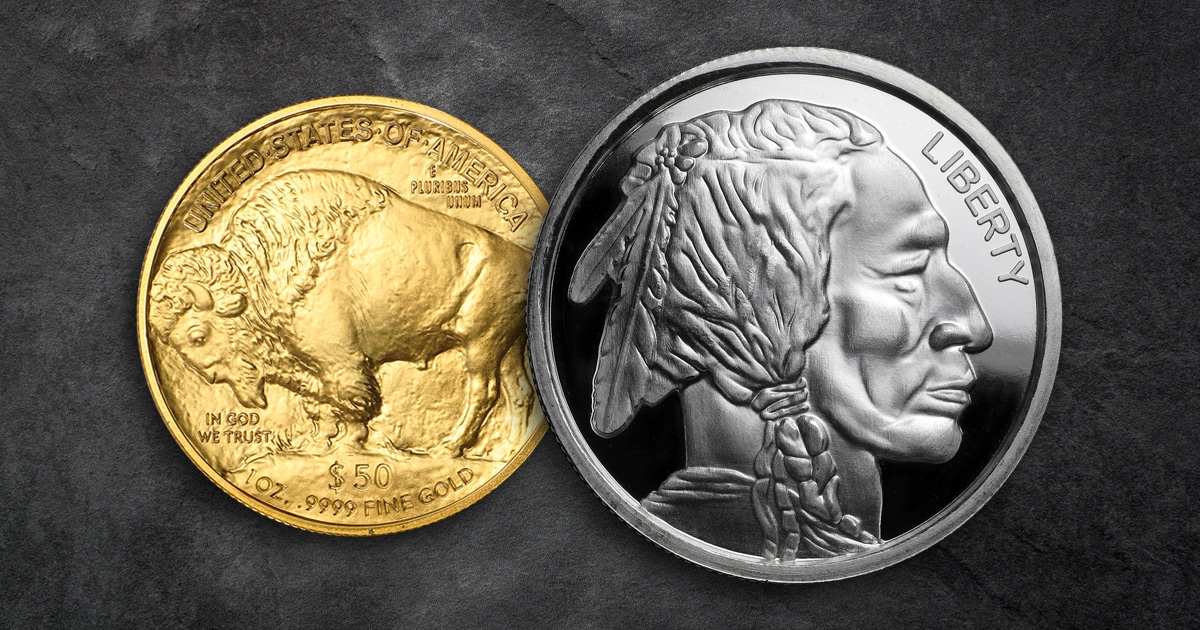
If you are looking to invest in precious metals and want something smaller, lighter, and easier to store and transport than large bullion bars, coins and rounds are the way to go. Both are flat, round, and easily stackable.
As precious metals items, they can be graded by numismatic organizations like the Professional Coin Grading Service or Numismatic Guaranty Corporation. In some cases, the two can look almost identical. But for all their similarities, their values are determined differently.
What is a Coin?
Two important attributes distinguish a coin from a round:
- A coin is minted by a sovereign government.
- A coin is legal tender with a minimum face value.
Typically, government treasury-issued mint coins are intended to circulate within the public as currency, so the coins are given a face value that can be used during financial transactions. The actual coin value, however, can differ from its minted face value. Time, historical context, and other features can increase coin values such that previously circulated coins become collectors’ pieces.
For bullion coins, which are intended as investment pieces and not for circulation, the face value is typically low in comparison to the precious metal content. Having a high commodity, metal, or historical value and low nominal or face value ensures that the coin stays out of public circulation.
Coin designs usually represent cultural or patriotic values. In most countries, designs must be approved by a legislative body or advisory committee. Their legal status as tender offer investors some protection since it is illegal to counterfeit coins.
What is a Round?
Rounds are minted by private mints and have no face value. They are not intended to ever circulate as currency. As an investment in metals, rounds are great stores of value since their value is based off its precious metal content and collectability. This usually means that it is more affordable to buy silver rounds than silver coins, or gold rounds than gold coins, especially rare coins.
Designs for rounds are limitless, often commemorating events and stories or honoring favored interests like sports, wildlife, holidays, and comic book characters. Many rounds pay homage to historical coins and are designed as almost exact replicas. The Hobby Protection Act of 1973 requires that imitation rounds, and other numismatics, be clearly marked with “COPY” to quickly identify replicas and prevent fraud.
Another interesting difference between coins and rounds that prevents counterfeiting: rounds cannot be made with the exact dimension and weight of any coin produced anywhere in the world. This allows for some interesting size listings including everything from 1/25 oz gold rounds to 1/4 oz copper rounds to 1 oz silver rounds.




